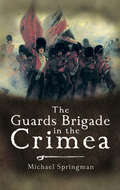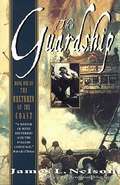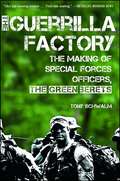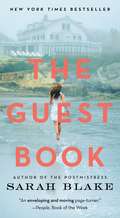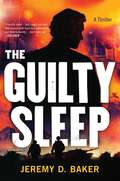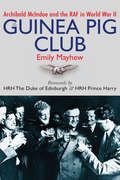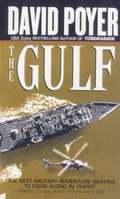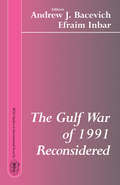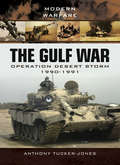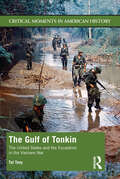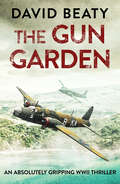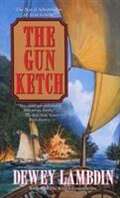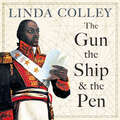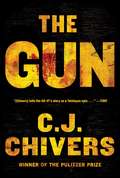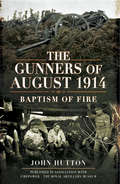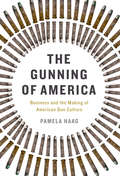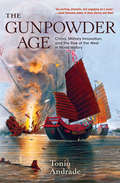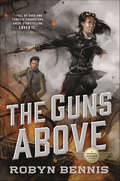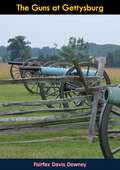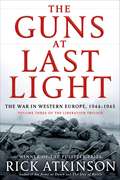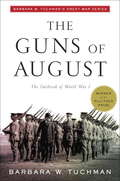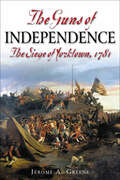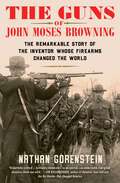- Table View
- List View
The Guardians 01 (Guardians #01)
by Richard AustinFREEDOM’S LAST HOPE Unknown to most Americans, there is a plan for the day after Before the dust of World War III has settled, Project Guardian moves into action. America’s secret weapon is a four-man elite survival team, armed with awesome combat skills, equipped with the most devastating personal weaponry ever devised, trained to hair-trigger tautness, and entrusted with freedom’s last hope: the top-secret Blueprint for Renewal. First step: get the new President safely out of ravaged Washington, across a thousand miles of chaos, and into the impregnable midwestern fortress known as Heartland. A tall order; even for a bunch of hardcore heroes.
The Guards Armoured Division: A Short History
by Maj.-Gen. G. L. VerneyFirst published in 1955, this book is a short history of the Guards Armoured Division, which was an armoured division of the British Army during the Second World War.The division was created in the United Kingdom on 17 June 1941 during World War II from elements of the Guards units, the Grenadier Guards, Coldstream Guards, Scots Guards, Irish Guards. and Welsh Guards.The division remained in the United Kingdom, training, until 13 June 1944, when it landed several armoured command vehicles at Arromanches and lagered its advanced tactical headquarters in communication with GHQ awaiting the bulk of the armour Normandy, France, during Operation Overlord as part of VIII Corps, where its first major engagement was Operation Goodwood, the attack by three armoured divisions towards Bourguebus Ridge in an attempt to break out of the Normandy beachhead.The division existed until 12 June 1945, more than two months after Victory in Europe Day, when it was reorganised as an infantry division, the Guards Division, after almost exactly four years as an armoured division.
The Guards Brigade in the Crimea
by Michael SpringmanThe Guards Brigade consisted of three battalions, the 3rd Grenadier Guards, 1st Coldstream Guards and 1st Scottish Fusilier Guards (as the Scots Guards were then known).The book opens with a resum of the causes of the War and an analysis of the woeful disorganization of the Army, in contrast to the efficiency of the Royal Navy. The Brigades performance in the major battles (Alma, inkerman etc.) is examined. The author describes the Russians plans, the ground and conditions experienced by the long suffering troops. The roles and abilities of the various commanders, often found wanting, is fascinatingly treated. After the war was over, the return home and parades are described.
The Guardship: Book One of the Brethren of the Coast
by James L. NelsonShortly after Thomas Marlowe's arrival in Williamsburg, Virginia, all in that newfound capital city are speaking his name. With the bounty from his years as a pirate--a life he intends to renounce and keep forever secret--he purchases a fine plantation from a striking young widow, and soon after kills the favorite son of one of Virginia's most powerful clans while defending her honor. But it is a daring feat of remarkable cunning that truly sets local tongues wagging: a stunning move that wins Marlowe command of Plymouth Prize, the colony's decrepit guardship.But even as the enigmatic Marlowe bravely leads the King's sailors in bloody pitched battle against the cutthroats who infest the waters off Virginia's shores, a threat from his illicit past looms on the horizon that could doom Marlowe and his plans. Jean-Pierre LeRois, captain of the Vengeance--a brigand notorious even among other brigands for his violence and debauchery--plots to seize the colony's wealth, forcing Marlowe to choose between losing all or facing the one man he fears. Only an explosive confrontation on the open sea can determine whether the Chesapeake will be ruled by the crown or the Brethren of the Coast.Shortly after Thomas Marlowe's arrival in Williamsburg, Virginia, all in that newfound capital city are speaking his name. With the bounty from his years as a pirate--a life he intends to renounce and keep forever secret--he purchases a fine plantation from a striking young widow, and soon after kills the favorite son of one of Virginia's most powerful clans while defending her honor. But it is a daring feat of remarkable cunning that truly sets local tongues wagging: a stunning move that wins Marlowe command of Plymouth Prize, the colony's decrepit guardship.But even as the enigmatic Marlowe bravely leads the King's sailors in bloody pitched battle against the cutthroats who infest the waters off Virginia's shores, a threat from his illicit past looms on the horizon that could doom Marlowe and his plans. Jean-Pierre LeRois, captain of the Vengeance--a brigand notorious even among other brigands for his violence and debauchery--plots to seize the colony's wealth, forcing Marlowe to choose between losing all or facing the one man he fears. Only an explosive confrontation on the open sea can determine whether the Chesapeake will be ruled by the crown or the Brethren of the Coast.
The Guerrilla Factory
by Tony SchwalmTHE NAVY HAS THE SEALS, and the Army has the Green Berets. They are masters of asymmetrical warfare, trained to immerse themselves in hostile territory, sleeping near their enemies and building relationships with people who may want to kill them. Retired lieutenant colonel Tony Schwalm knows this group well, because he is one of them and he trained them. In The Guerrilla Factory, he provides an unbelievably gripping inside look into the grueling training that every Army officer must endure to become one of America's elite Green Berets. The Special Forces Qualification Course, also known as the Q Course, is infamous in U.S. Army lore. It transforms conventional soldiers, through blood, sweat, and tears, into unconventional guerrillas. As a young soldier, Schwalm earned his own Green Beret there. Later, he was the commander of Special Forces officer training at Fort Bragg, evaluating and redesigning the crucible in which leaders face brutal tests of physical strength, stamina, and wits. The Guerrilla Factory is the engaging and compelling story of Schwalm's experience there as a student (from selection to graduation) and his time as the commander of training at Fort Bragg. It is a story of young soldiers striving to become the elite of the elite--of their trials, physical and emotional, and of their triumphs and losses. In this dramatic account of the challenges faced by these young soldiers, Schwalm describes how men are forced to demonstrate ingenuity under intensely adverse conditions as they are pushed to the point of hallucination, walk until their feet are bloody, and fight off packs of angry dogs with nothing but a rubber rifle. Soldiers today face an entirely different kind of warfare and must be schooled to deal with unusual circumstances. They must have intricate knowledge of how to gather information in a dangerous, unstable atmosphere, and they need to be able to adapt quickly to differences in their surroundings. Schwalm's book takes readers deep into this world, showing exactly how soldiers acquire the necessary skills. Revealing details never before shared outside military circles, Schwalm provides a rare and rousing look inside the courageous hearts and souls of soldiers who put their lives on the line for duty, honor, and our country.
The Guest Book: A Novel
by Sarah Blake<P><P>A lifetime of secrets. A history untold. <P><P>No. It is a simple word, uttered on a summer porch in 1936. And it will haunt Kitty Milton for the rest of her life. Kitty and her husband, Ogden, are both from families considered the backbone of the country. But this refusal will come to be Kitty’s defining moment, and its consequences will ripple through the Milton family for generations. <P><P>For while they summer on their island in Maine, anchored as they are to the way things have always been, the winds of change are beginning to stir. <P><P>In 1959 New York City, two strangers enter the Miltons’ circle. One captures the attention of Kitty’s daughter, while the other makes each of them question what the family stands for. This new generation insists the times are changing. And in one night, everything does. <P><P>So much so that in the present day, the third generation of Miltons doesn’t have enough money to keep the island in Maine. Evie Milton’s mother has just died, and as Evie digs into her mother’s and grandparents’ history, what she finds is a story as unsettling as it is inescapable, the story that threatens the foundation of the Milton family myth. <P><P>Moving through three generations and back and forth in time, The Guest Book asks how we remember and what we choose to forget. It shows the untold secrets we inherit and pass on, unknowingly echoing our parents and grandparents. Sarah Blake’s triumphant novel tells the story of a family and a country that buries its past in quiet, until the present calls forth a reckoning. <P><b>A New York Times Bestseller</b>
The Guilty Sleep
by Jeremy D. Baker"A terrific debut–fast, tough and hard, shot through with hard-won authenticity and deep humanity. . . . Don't miss out." —Lee Child No one gets hurt is a fine plan. A worthy goal. But when it comes down to the moment, there&’s always plenty of hurt to go around.Afghanistan vet Dexter Grant is broke, reeling from PTSD, and on the verge of divorce when he&’s approached by his old Army buddies to help rescue their former interpreter, the man who once saved Dex&’s life. It means ripping off a vicious queenpin&’s drug proceeds—but not to worry, they have it all worked out. And if anyone can pull it off, it&’s Dex&’s former team lead, Staff Sergeant Saenz. Tempted by an easy score that could make his own problems disappear and imbued with new purpose, Dex agrees to play his part in the scheme. But just as in combat, the best-laid plans don&’t survive first contact with the enemy. When the heist goes off the rails, his wife and daughter become targets for bloody revenge. Dex must face down his spiraling inner darkness and call on all his strength and training to save his girls. In his quest, he&’ll learn there was much more to this heist than he ever imagined. Jeremy D. Baker bursts onto the crime fiction scene with this debut thriller that recalls C. J. Box&’s unlikely hero Joe Pickett and the small-town, lived-in noir of S. A. Cosby. Told from three revolving points-of-view, The Guilty Sleep is a riveting tale of robbery and betrayal in which a father&’s love faces off with a soldier&’s debt
The Guinea Pig Club: Archibald McIndoe and the RAF in World War II
by Emily Mayhew HRH The Duke of Edinburgh HRH Prince Harry Duke of SussexA truly inspiring tale about the history of the Guinea Pig Club. <P><P> Plastic surgery was in its infancy before the Second World War — the most rudimentary techniques were known only to a few surgeons worldwide. The Allies were tremendously fortunate in having the maverick surgeon Archibald McIndoe operating at a small hospital in East Grinstead in the south of England. <P><P>After arguing with his superiors, McIndoe set up a revolutionary new treatment regime and rightly secured his group of patients, dubbed the Guinea Pig Club, and honoured place in society. <P><P>Based on extensive research into official records and moving first-person recollections, this extraordinary book brings home the heroism and triumphs of this courageous band of men and contains updated material on how their example is inspiring today’s wounded veterans.
The Gulf (A Dan Lenson Novel #2)
by David PoyerAboard the guided-missile frigate U.S.S. Turner Van Zandt, Lieutenant-Commander Dan Lenson and his dedicated crew take on a daring assignment: escort a convoy of supertankers through the mine-filled Persian Gulf. For Lenson and his men, however, the danger is only just beginning. When a missile from a hit-and-run enemy sinks a U.S. destroyer, every ship and aircraft in the area goes on red alert. As all hands prepare for the inevitable showdown with a hostile Middle Eastern nation, Benjamin Shaker, the destroyer's hair-trigger captain, plots his own secret form of revenge. If he isn't stopped, it could mean disaster for the entire Gulf region-- and maybe the world!
The Gulf War of 1991 Reconsidered (Besa Studies In International Security)
by Andrew J. BacevichThe Gulf War of 1991 Reconsidered subjects one of the formative events of the post-Cold War era and a watershed in Middle Eastern international politics to a comprehensive reassessment. Condidering events from Arab, Israeli and American view points, the book examines the Gulf War's historical origins, conduct and legacy.
The Gulf War: Operation Desert Storm 1990–1991 (Modern Warfare)
by Anthony Tucker-JonesThis photographic history of Operation Desert Storm vividly captures the drama and humanity of each stage of the conflict. In the early 1990s, the American military led a coalition of United Nations forces to liberate Kuwait from Iraqi occupation. With more than 180 color photographs, The Gulf War provides a remarkable visual account of the conflict, documenting the vast array of military equipment deployed by both sides in the air, at sea and on land. Author and military expert Anthony Tucker-Jones, who was an analyst for British Defense Intelligence at the time of the conflict, describes the armed forces that were ranged against each other, including troops, armored vehicles, artillery pieces and aircraft. He also offers a concise overview of key events, including the preliminary air campaign, the elimination of the Iraqi navy, the coalition's ground offensive, tank battles, the liberation of Kuwait City, and more.
The Gulf of Tonkin: The United States and the Escalation in the Vietnam War (Critical Moments in American History)
by Tal TovyThe Gulf of Tonkin: The United States and the Escalation in the Vietnam War analyzes the events that led to the escalation of the conflict in Vietnam and increased American involvement. On August 4, 1964, the captains of two American destroyers, the USS Maddox and the USS Turner Joy, reported that their ships were being attacked by North Vietnamese torpedo boats. This report came on top of a previous report by the captain of the USS Maddox, indicating that he had been attacked by torpedo boats two nights earlier. The text introduces readers to the historiography of these incidents and how the perception of the events changed over time. The attacks, which were collectively called the Gulf of Tonkin incident, are presented in the context not only of the Vietnam War but also of the Cold War and U.S. government powers, enabling students to understand the events’ full ramifications. Using essential primary documents, Tal Tovy provides an accessible introduction to a vital turning point in U.S. and international affairs. This book will be useful to all students of the Vietnam War, American military history, and foreign policy history.
The Gun Garden
by David BeatyA young Royal Air Force Pilot is sent on a dangerous mission in Malta in this WWII novel of love and war. Malta, 1942. As the Second World War rages, the strategically vital Mediterranean island of Malta is isolated, desperately short of supplies, and slowly being starved into surrender. Into this hopeless situation, the British send two Wellington aircraft equipped with secret long-range radar. Their role is to find enemy convoys proceeding at night from Italy to Africa, and to lead a tiny naval force through the darkness to their unsuspecting target. One is captained by a veteran R.A.F. pilot, the other is flown by Peter Forrester, a young and hastily trained kid is about to have his carefree spirit tested by the maelstrom of war. Thrown into this island of heroes, Peter also meets Miranda Black, daughter of a naval captain and a plotter in Barracca H.Q. Written by acclaimed author and R.A.F. veteran David Beaty, The Gun Garden is an authentic tale of gritty battle and young love.
The Gun Ketch: The Naval Adventures of Alan Lewrie (The Naval Adventures of Alan Lewrie #5)
by Dewey LambdinA fighter, rogue, and ladies man, Alan Lewrie has done the unthinkable and gotten himself hitched—to a woman and a ship! The woman is the lovely Caroline Chiswick. The ship is the gun ketch Alacrity, bound for the Bahamas and a bloody game of cat and mouse with the pirates who ply the lunatic winds there. But while war comes naturally to the young husband, politics doesn't. Sure that a powerful Bahamian merchant is behind a scourge of piracy, Lewrie runs afoul of the Royal Governor--who holds the most precious hostage of all.... From the windswept Carolinas to the exotic East Indies, Alan Lewrie fights and frolics with all the wild abandon of the high seas themselves. He's a true swashbuckling naval hero in the age of great sailing ships.
The Gun, the Ship and the Pen: Warfare, Constitutions and the Making of the Modern World
by Linda Colley'If there were a Nobel Prize in History, Colley would be my nominee' Jill Lepore, New Yorker'One of the most exciting historians of her generation, but also one of the most interesting writers of non-fiction around' - William Dalrymple, Guardian'Colley takes you on intellectual journeys you wouldn't think to take on your own, and when you arrive you wonder that you never did it before' - David Aaronovitch, the Times'A global history of remarkable depth, imagination and insight' Tony Barber, Financial Times Summer BooksStarting not with the United States, but with the Corsican constitution of 1755, The Gun, the Ship, and the Pen moves through every continent, disrupting accepted narratives. Both monarchs and radicals play a role, from Catherine the Great of Russia, with her remarkable Nakaz, to Sierra Leone's James Africanus Horton, to Tunisia's Khayr-al-Din, a creator of the first modern Islamic constitution. Throughout, Colley demonstrates how constitutions evolved in tandem with warfare, and how they have functioned to advance empire as well as promote nations, and worked to exclude aswell as liberate.Whether reinterpreting Japan's momentous 1889 constitution, or exploring the significance of the first constitution to enfranchise all adult women on Pitcairn Island in the Pacific in 1838, this is one of the most original global histories in decades.
The Gun: The AK-47 and the Evolution of War
by C. J. ChiversAt a secret arms-design contest in Stalin's Soviet Union, army technicians submitted a stubby rifle with a curved magazine. Dubbed the AK-47, it was selected as the Eastern Bloc's standard arm. Scoffed at in the Pentagon as crude and unimpressive, it was in fact a breakthrough--a compact automatic that could be mastered by almost anyone, last decades in the field, and would rarely jam. Manufactured by tens of millions in planned economies, it became first an instrument of repression and then the most lethal weapon of the Cold War. Soon it was in the hands of terrorists.In a searing examination of modern conflict and official folly, C. J. Chivers mixes meticulous historical research, investigative reporting, and battlefield reportage to illuminate the origins of the world's most abundant firearm and the consequences of its spread. The result, a tour de force of history and storytelling, sweeps through the miniaturization and distribution of automatic firepower, and puts an iconic object in fuller context than ever before. The Gun dismantles myths as it moves from the naïve optimism of the Industrial Revolution through the treacherous milieu of the Soviet Union to the inside records of the Taliban. Chivers tells of the 19th-century inventor in Indianapolis who designs a Civil War killing machine, insisting that more-efficient slaughter will save lives. A German attaché who observes British machine guns killing Islamic warriors along the Nile advises his government to amass the weapons that would later flatten British ranks in World War I. In communist Hungary, a locksmith acquires an AK-47 to help wrest his country from the Kremlin's yoke, beginning a journey to the gallows. The Pentagon suppresses the results of firing tests on severed human heads that might have prevented faulty rifles from being rushed to G.I.s in Vietnam. In Africa, a millennial madman arms abducted children and turns them on their neighbors, setting his country ablaze. Neither pro-gun nor anti-gun, The Gun builds to a terrifying sequence, in which a young man who confronts a trio of assassins is shattered by 23 bullets at close range. The man survives to ask questions that Chivers examines with rigor and flair.Throughout, The Gun animates unforgettable characters--inventors, salesmen, heroes, megalomaniacs, racists, dictators, gunrunners, terrorists, child soldiers, government careerists, and fools. Drawing from years of research, interviews, and from declassified records revealed for the first time, he presents a richly human account of an evolution in the very experience of war.
The Gunners of August 1914: Baptism of Fire
by John HuttonThe Great War will always be synonymous with trench warfare and the mass slaughter inflicted by machine guns on the helpless but gallant infantry. There is a good reason for this view as the machine guns took a terrible toll, and the infantry's experiences continue to fascinate and appal people today. But one aspect of the fighting that gets insufficient attention is the artillery. Histories of the major battles often reduce the role of the big guns to a few paragraphs, and this has created a seriously distorted impression of the reality of the fighting. A better balance needs to be struck, and that is the intention of John Hutton's new book on the gunners of 1914.He tells the story of the war as the gunners themselves saw it, focusing on the first few months of warfare which were fundamental to the conduct of the campaign. The gunners may not have always shared the trench experiences of the infantry in the front line, but they were in the thick of the action, and success or failure depended on them. The personal testimonies of those who served with and supported the guns provide a vital insight into the colossal tragedy and drama of the war from the artilleryman's point of view.
The Gunning of America: Business and the Making of American Gun Culture
by Pamela HaagAmericans have always loved guns. This special bond was forged during the American Revolution and sanctified by the Second Amendment. It is because of this exceptional relationship that American civilians are more heavily armed than the citizens of any other nation.Or so we're told.In The Gunning of America, historian Pamela Haag overturns this conventional wisdom. American gun culture, she argues, developed not because the gun was exceptional, but precisely because it was not: guns proliferated in America because throughout most of the nation's history, they were perceived as an unexceptional commodity, no different than buttons or typewriters.Focusing on the history of the Winchester Repeating Arms Company, one of the most iconic arms manufacturers in America, Haag challenges many basic assumptions of how and when America became a gun culture. Under the leadership of Oliver Winchester and his heirs, the company used aggressive, sometimes ingenious sales and marketing techniques to create new markets for their product. Guns have never "sold themselves"; rather, through advertising and innovative distribution campaigns, the gun industry did. Through the meticulous examination of gun industry archives, Haag challenges the myth of a primal bond between Americans and their firearms. Over the course of its 150 year history, the Winchester Repeating Arms Company sold over 8 million guns. But Oliver Winchester-a shirtmaker in his previous career-had no apparent qualms about a life spent arming America. His daughter-in-law Sarah Winchester was a different story. Legend holds that Sarah was haunted by what she considered a vast blood fortune, and became convinced that the ghosts of rifle victims were haunting her. She channeled much of her inheritance, and her conflicted conscience, into a monstrous estate now known as the Winchester Mystery House, where she sought refuge from this ever-expanding army of phantoms.In this provocative and deeply-researched work of narrative history, Haag fundamentally revises the history of arms in America, and in so doing explodes the clichés that have created and sustained our lethal gun culture.
The Gunpowder Age: China, Military Innovation, and the Rise of the West in World History
by Tonio AndradeThe Chinese invented gunpowder and began exploring its military uses as early as the 900s, four centuries before the technology passed to the West. But by the early 1800s, China had fallen so far behind the West in gunpowder warfare that it was easily defeated by Britain in the Opium War of 1839-42. What happened? In The Gunpowder Age, Tonio Andrade offers a compelling new answer, opening a fresh perspective on a key question of world history: why did the countries of western Europe surge to global importance starting in the 1500s while China slipped behind?Historians have long argued that gunpowder weapons helped Europeans establish global hegemony. Yet the inhabitants of what is today China not only invented guns and bombs but also, as Andrade shows, continued to innovate in gunpowder technology through the early 1700s--much longer than previously thought. Why, then, did China become so vulnerable? Andrade argues that one significant reason is that it was out of practice fighting wars, having enjoyed nearly a century of relative peace, since 1760. Indeed, he demonstrates that China--like Europe--was a powerful military innovator, particularly during times of great warfare, such as the violent century starting after the Opium War, when the Chinese once again quickly modernized their forces. Today, China is simply returning to its old position as one of the world's great military powers.By showing that China's military dynamism was deeper, longer lasting, and more quickly recovered than previously understood, The Gunpowder Age challenges long-standing explanations of the so-called Great Divergence between the West and Asia.
The Guns Above: A Signal Airship Novel (The Signal Airship Novels #1)
by Robyn BennisRobyn Bennis’s THE GUNS ABOVE is an adventurous military fantasy debut about a nation's first female airship captain.They say it’s not the fall that kills you. For Josette Dupre, the Corps’ first female airship captain, it might just be a bullet in the back. On top of patrolling the front lines, she must also contend with a crew who doubts her expertise, a new airship that is an untested deathtrap, and the foppish aristocrat Lord Bernat, a gambler and shameless flirt with the military know-how of a thimble. Bernat’s own secret assignment is to catalog her every moment of weakness and indecision. So when the enemy makes an unprecedented move that could turn the tide of the war, can Josette deal with Bernat, rally her crew, and survive long enough to prove herself?“Full of sass and terrific characters. Great storytelling. Loved it.” —Patricia BriggsAt the Publisher's request, this title is being sold without Digital Rights Management Software (DRM) applied.
The Guns at Gettysburg
by Fairfax Davis DowneyThe guns still stand at Gettysburg amid the markers and the monuments on the hallowed ground. And it is fitting that they do, for Gettysburg marked not only the high tide of the Confederacy and the turning point of the war, but also the greatest cannonade ever seen in this hemisphere. In no battle of the Civil War did artillery play a more decisive role than it did here, and no factor contributed more to the Union victory than the superior handling of the Federal cannon. Amid all the discussions of the errors of generalship on both sides, too little credit has been given to that all-but-forgotten hero of the battle, General Henry Jackson Hunt, the chief of the Union artillery. In reappraising and retelling the battle form the artilleryman’s point of view, Colonel Downey has made a real contribution to our understanding of the reasons for the Confederate failure to crush the Army of the Potomac.
The Guns at Last Light: The War in Western Europe, 1944-1945 (The Liberation Trilogy #3)
by Rick Atkinson<p>The magnificent conclusion to Rick Atkinson's acclaimed Liberation Trilogy about the Allied triumph in Europe during World War II. It is the twentieth century's unrivaled epic: at a staggering price, the United States and its allies liberated Europe and vanquished Hitler. <p>In the first two volumes of his bestselling Liberation Trilogy, Rick Atkinson recounted how the American-led coalition fought through North Africa and Italy to the threshold of victory. Now, in <i>The Guns at Last Light</i>, he tells the most dramatic story of all, the titanic battle for Western Europe. <p>D-Day marked the commencement of the final campaign of the European war, and Atkinson's riveting account of that bold gamble sets the pace for the masterly narrative that follows. The brutal fight in Normandy, the liberation of Paris, the disaster that was Operation Market Garden, the horrific Battle of the Bulge, and finally the thrust to the heart of the Third Reich-all these historic events and more come alive with a wealth of new material and a mesmerizing cast of characters. <p>Atkinson tells the tale from the perspective of participants at every level, from presidents and generals to war-weary lieutenants and terrified teenage riflemen. When Germany at last surrenders, we understand anew both the devastating cost of this global conflagration and the enormous effort required to win the Allied victory. <p>With the stirring final volume of this monumental trilogy, Atkinson's accomplishment is manifest. He has produced the definitive chronicle of the war that unshackled a continent and preserved freedom in the West.</p>
The Guns of August: The Outbreak of World War I
by Barbara W. TuchmanIn this landmark account, renowned historian Barbara W. Tuchman re-creates the first month of World War I: thirty days in the summer of 1914 that determined the course of the conflict, the century, and ultimately our present world. Beginning with the funeral of Edward VII, Tuchman traces each step that led to the inevitable clash. And inevitable it was, with all sides plotting their war for a generation. Dizzyingly comprehensive and spectacularly portrayed with her famous talent for evoking the characters of the war’s key players, Tuchman’s magnum opus is a classic for the ages.<P><P> Pulitzer Prize Winner
The Guns of Independence: The Siege of Yorktown, 1781
by Jerome A. GreeneA modern, scholarly account of the most decisive campaign during the American Revolution examining the artillery, tactics and leadership involved.The siege of Yorktown in the fall of 1781 was the single most decisive engagement of the American Revolution. The campaign has all the drama any historian or student could want: the war’s top generals and admirals pitted against one another; decisive naval engagements; cavalry fighting; siege warfare; night bayonet attacks; and much more. Until now, however, no modern scholarly treatment of the entire campaign has been produced.By the summer of 1781, America had been at war with England for six years. No one believed in 1775 that the colonists would put up such a long and credible struggle. France sided with the colonies as early as 1778, but it was the dispatch of 5,500 infantry under Comte de Rochambeau in the summer of 1780 that shifted the tide of war against the British.In early 1781, after his victories in the Southern Colonies, Lord Cornwallis marched his army north into Virginia. Cornwallis believed the Americans could be decisively defeated in Virginia and the war brought to an end. George Washington believed Cornwallis’s move was a strategic blunder, and he moved vigorously to exploit it. Feinting against General Clinton and the British stronghold of New York, Washington marched his army quickly south. With the assistance of Rochambeau's infantry and a key French naval victory at the Battle off the Capes in September, Washington trapped Cornwallis on the tip of a narrow Virginia peninsula at a place called Yorktown. And so it began.Operating on the belief that Clinton was about to arrive with reinforcements, Cornwallis confidently remained within Yorktown’s inadequate defenses. Determined that nothing short of outright surrender would suffice, his opponent labored day and night to achieve that end. Washington’s brilliance was on display as he skillfully constricted Cornwallis’s position by digging entrenchments, erecting redoubts and artillery batteries, and launching well-timed attacks to capture key enemy positions. The nearly flawless Allied campaign sealed Cornwallis’s fate. Trapped inside crumbling defenses, he surrendered on October 19, 1781, effectively ending the war in North America.Penned by historian Jerome A. Greene, The Guns of Independence: The Siege of Yorktown, 1781 offers a complete and balanced examination of the siege and the participants involved. Greene’s study is based upon extensive archival research and firsthand archaeological investigation of the battlefield. This fresh and invigorating study will satisfy everyone interested in American Revolutionary history, artillery, siege tactics, and brilliant leadership.
The Guns of John Moses Browning: The Remarkable Story of the Inventor Whose Firearms Changed the World
by Nathan GorensteinA &“well-researched and very readable new biography&” (The Wall Street Journal) of &“the Thomas Edison of guns,&” a visionary inventor who designed the modern handgun and whose awe-inspiring array of firearms helped ensure victory in numerous American wars and holds a crucial place in world history.Few people are aware that John Moses Browning—a tall, humble, cerebral man born in 1855 and raised as a Mormon in the American West—was the mind behind many of the world-changing firearms that dominated more than a century of conflict. He invented the design used in virtually all modern pistols, created the most popular hunting rifles and shotguns, and conceived the machine guns that proved decisive not just in World Wars I and II but nearly every major military action since. Yet few in America knew his name until he was into his sixties. Now, author Nathan Gorenstein brings firearms inventor John Moses Browning to vivid life in this riveting and revealing biography. Embodying the tradition of self-made, self-educated geniuses (like Lincoln and Edison), Browning was able to think in three dimensions (he never used blueprints) and his gifted mind produced everything from the famous Winchester &“30-30&” hunting rifle to the awesomely effective machine guns used by every American aircraft and infantry unit in World War II. The British credited Browning&’s guns with helping to win the Battle of Britain. His inventions illustrate both the good and bad of weapons. Sweeping, lively, and brilliantly told, this fascinating book that &“gun collectors and historians of armaments will cherish&” (Kirkus Reviews) introduces a little-known legend whose impact on history ranks with that of the Wright Brothers, Thomas Edison, and Henry Ford.


